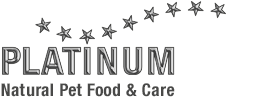
How does the smell of your dog work?
Just follow your nose! The dog’s most important sensory organ is the nose and it is playing a decisive role in different ways. Dogs notice their whole environment with their sense of smell – it is used for orientation, locating prey, but also to warn about enemies and danger (e.g. fire), for reproduction (e.g. to recognize bitches in heat) and for communication between dogs. While a walk, dogs scent the marks of fellows or smell each other as greeting.
But why are dogs able to smell that well? The excellent sense of smell is based on the long snout, which offers quite much room for the olfactory cells. On the other hand, the surface of the scent mucosa is clearly bigger than the humans due to a special plication in the nose. For comparison: while humans only have about five million olfactory cells, the dog has about 200 million! Besides to the anatomy advantages, dogs also use a special smelling technique which enables a better differentiation of the smelling substances. And this is what snooping is about. This is how big amounts of air are optimally getting to the scent mucosa and the swirling of the air is enabling the dog to recognize even small amounts of scent molecules. For converting of the scent information the message gets delivered to the scent brain, which is very distinctive.
By the way: breeds with very short noses like the pug dog and the French bulldog have a worse sense of smell in comparison to e.g. a German shepherd. However, they are still able to smell much better than a human.
These skilled dog noses are used for multifarious manners: after a special training these dogs are used by police or customs to find people, drugs or even counterfeit money and explosive agent. But also for human life saving dogs are used, for example after a landslide or an earthquake. In medical areas, trained dogs are able to warn in case of hyperglycaemia or hypoglycaemia. Even an epileptic fit or some types of cancer can be smelled by dogs.














































